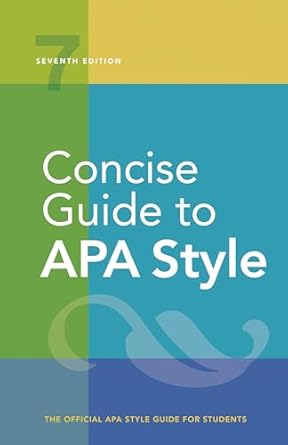[toc]
apa tables figures visual communication guide
Concise Guide to APA Style: 7th Edition (OFFICIAL)
Page 155 Review
The Art of Effective Visual Communication: A Deep Dive into APA Style Tables and Figures
In academic writing, particularly when adhering to the American Psychological Association (APA) style, tables and figures are indispensable tools.
They serve as potent mechanisms to condense complex information, making it accessible and comprehensible for the reader.
As stated in the ebook, “Tables and figures help writers present a large amount of information efficiently and make their data more comprehensible.” This statement encapsulates the core purpose of incorporating visuals into your writing.
Understanding the Distinction
Before delving into the intricacies of creating these visuals, it’s crucial to differentiate between tables and figures.
The ebook clarifies, “A table usually shows numerical values (e.g., means and standard deviations) or textual information (e.g., lists of stimulus words, responses from participants) arranged in columns and rows.
A figure may be a chart, graph, photograph, drawing, or any other illustration.” In essence, tables are structured displays of data organized in rows and columns, while figures encompass a broader range of visual representations.
The line between tables and figures can sometimes blur.
As the book acknowledges, “At times, the distinction between tables and figures may be unclear; in general, tables are characterized by a row-column structure, whereas any type of illustration or image other than a table is considered a figure.” This distinction emphasizes the structural element of tables versus the illustrative nature of figures.
The Blueprint for Creation: Design, Preparation, and Format
Crafting effective tables and figures requires careful attention to detail, encompassing design, preparation, and formatting.
The ebook lays the groundwork, stating that it “provides essential guidelines for creating and formatting tables and figures in APA Style.
We start by outlining the purpose of tables and figures and presenting general guidelines for creating tables and figures including how to design, prepare, format, place, and reproduce them.” This comprehensive approach ensures that visuals not only present information accurately but also adhere to the stringent standards of APA style.
Table Construction: A Framework for Clarity
The ebook dedicates a section to tables, highlighting their construction, components, and the appropriate use of abbreviations. “The second section is devoted to tables, including table construction, table components, and abbreviations within tables.” This section emphasizes the importance of a well-structured table that is easy to read and interpret.
Consider the table’s design – are the rows and columns clearly labeled?
Is the information presented logically?
Are abbreviations defined for clarity?
Figures: Pictorial Representations of Data
Figures, on the other hand, offer a more flexible approach to visual representation.
The guide introduces “general principles of figure construction, including descriptions of figure components, labeling, and notes.” This segment underscores the significance of clearly labeling axes, providing informative captions, and including any necessary notes to contextualize the figure’s data.
Checklists and Samples: Your Guiding Light
To ensure you are on the right track, the ebook includes checklists and samples. “Both tables and figures sections end with a checklist and a variety of samples.” These invaluable resources act as a safeguard, preventing common errors and offering concrete examples of well-constructed tables and figures.
By consulting these resources, you can refine your visual presentations to meet the exacting standards of APA style.
The Overarching Objective: Facilitating Understanding
The ebook circles back to the core purpose, reaffirming that “The primary purpose of any table or figure is to facilitate readers’ understanding of the work.” The aim is not merely to present data but to ensure that readers can readily grasp the information being conveyed.
Tables and figures, when employed effectively, serve as bridges, connecting complex data to the reader’s comprehension.
Buy full ebook for only $18: https://www.lulu.com/shop/american-psychological-association/concise-guide-to-apa-style-7th-edition-official/ebook/product-rmzpq54.html?page=1&pageSize=4

